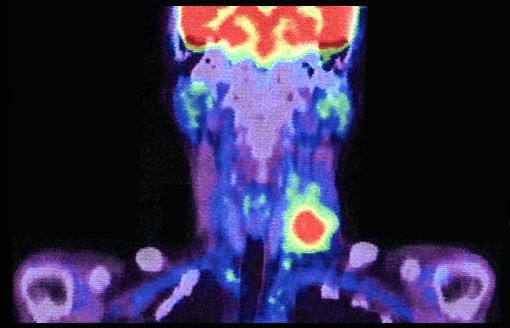June 21, 2015 – PET/CT (positron emission tomography/computed tomography) should be implemented in the routine imaging work–up of stage III–IV head and neck squamous cell carcinoma (HNSCC), according to recent study published in the European Journal of Nuclear Medicine & Molecular Imaging.1
The authors of the study compared PET/CT to conventional imaging to determine the impact of incremental staging information provided by positron emission tomography/computed tomography (PET/CT) on management plans in patients with untreated stage III–IV HNSCC.
They prospectively studied 84 patients [median age 63.5 years (39–84); 73 men] with histologically confirmed HNSCC. First, based on a conventional work-up (physical examination, CT imaging of the head, neck and chest), the multidisciplinary head and neck tumor board documented the TNM stage and a management plan for each patient, outlining the modalities to be used, including surgery, radiation therapy (RT), chemotherapy or a combination. After release of the PET/CT results, new TNM staging and management plans were agreed on by the multidisciplinary tumor board. Any changes in stage or intended management due to the PET/CT findings were then analyzed.

Image: PET-CT scan of lymph node metastases in cancer.2
The results showed that conventional and PET/CT stages were discordant in 32/84 (38 %) cases. They altered patient management in 22/84 (26 %) patients, with a moderate impact (change within the same treatment modality: type of surgery, radiation technique/dose) in 8 (9.5 %) patients and high impact (change in treatment intent and/or treatment modality → curative to palliative, or surgery to chemoradiation or detection of unknown primary tumour or a synchronous second primary tumor) in 14 (16.6 %) patients. Based on these results, they concluded that PET/CT TNM classification was significantly more accurate (92.5 vs 73.7 %) than conventional staging.
References:
- Cacicedo J, et al. Should PET/CT be implemented in the routine imaging work-up of locally advanced head and neck squamous cell carcinoma? A prospective analysis. European Journal of Nuclear Medicine and Molecular Imaging. August 2015, Volume 42, Issue 9, pp 1378-1389.
-
The Conversation. Number of immune cells in tumours could soon help predict and treat cancers. September 23, 2014.




